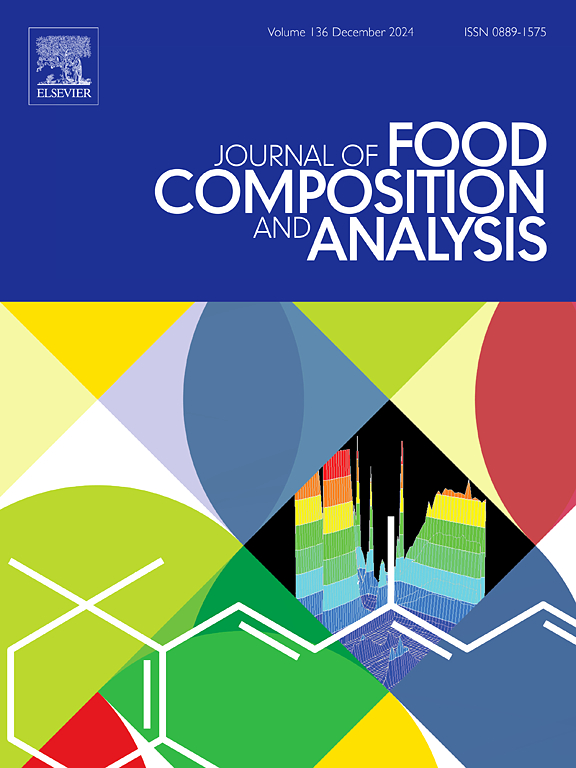Highly sensitive determination of neomycin residues in milk samples using a fast, simple competitive carbon dot-linked immunosorbent assay (CDs-LISA)
IF 4
2区 农林科学
Q2 CHEMISTRY, APPLIED
引用次数: 0
Abstract
Contaminants from antibiotic residues in milk are a potential concern for the global dairy market. We needed rapid, simple, sensitive, and selective analytical methods to ensure the safety of raw milk and milk products for customers. Here, we developed a rapid and simple competitive carbon dot-linked immunosorbent assay (CDs-LISA) using a CDs-conjugated antibody as an effective fluorescent reporter for sensitive neomycin detection in milk. Under the optimum conditions, the detection time of the proposed assay was completed in 30 min and exhibited a wide working range of 0.02–2 ng mL⁻¹ , a low detection limit (0.01 ng mL⁻¹), high precision (%RSD 2.6), and good selectivity in neomycin detection. Using this assay, neomycin levels in milk samples were easily measured in a range from 0.23 to 1.44 µg kg−1, and the recovery rates were determined to be in the range of 84.7 %–113.2 % with an acceptable RSD (3.36–10.67 %). The competitive CDs-LISA demonstrated greater analytical performance than standard immunoassays using horseradish peroxidase and showed significant promise for simple and rapid detection immunoassays, indicating the utility of this analytical method for monitoring antibiotic contamination in milk and its application to dairy food control.
求助全文
约1分钟内获得全文
求助全文
来源期刊

Journal of Food Composition and Analysis
工程技术-食品科技
CiteScore
6.20
自引率
11.60%
发文量
601
审稿时长
53 days
期刊介绍:
The Journal of Food Composition and Analysis publishes manuscripts on scientific aspects of data on the chemical composition of human foods, with particular emphasis on actual data on composition of foods; analytical methods; studies on the manipulation, storage, distribution and use of food composition data; and studies on the statistics, use and distribution of such data and data systems. The Journal''s basis is nutrient composition, with increasing emphasis on bioactive non-nutrient and anti-nutrient components. Papers must provide sufficient description of the food samples, analytical methods, quality control procedures and statistical treatments of the data to permit the end users of the food composition data to evaluate the appropriateness of such data in their projects.
The Journal does not publish papers on: microbiological compounds; sensory quality; aromatics/volatiles in food and wine; essential oils; organoleptic characteristics of food; physical properties; or clinical papers and pharmacology-related papers.
 求助内容:
求助内容: 应助结果提醒方式:
应助结果提醒方式:


